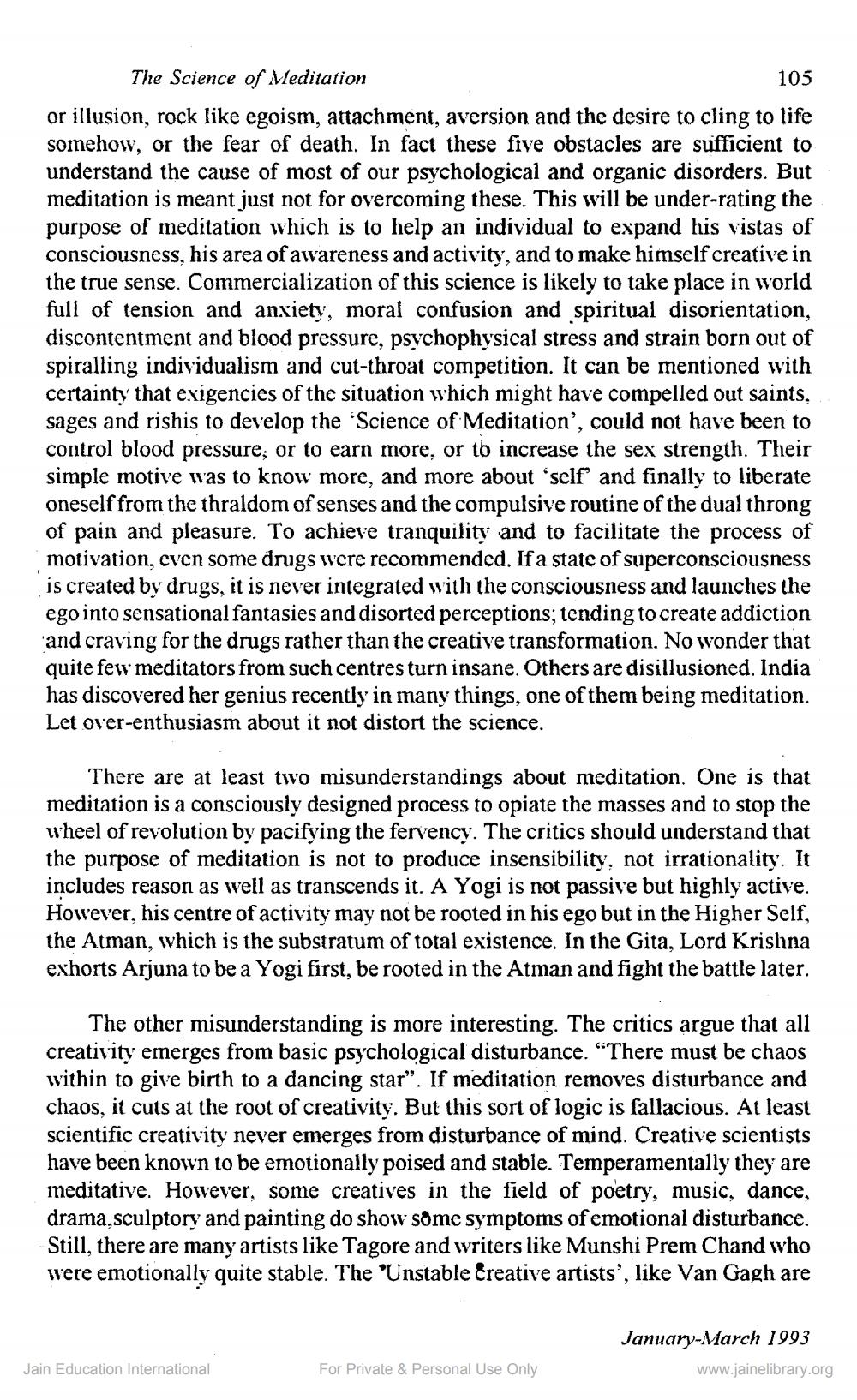________________
The Science of Meditation
105
or illusion, rock like egoism, attachment, aversion and the desire to cling to life somehow, or the fear of death. In fact these five obstacles are sufficient to understand the cause of most of our psychological and organic disorders. But meditation is meant just not for overcoming these. This will be under-rating the purpose of meditation which is to help an individual to expand his vistas of consciousness, his area of awareness and activity, and to make himself creative in the true sense. Commercialization of this science is likely to take place in world full of tension and anxiety, moral confusion and spiritual disorientation, discontentment and blood pressure, psychophysical stress and strain born out of spiralling individualism and cut-throat competition. It can be mentioned with certainty that exigencies of the situation which might have compelled out saints, sages and rishis to develop the 'Science of Meditation', could not have been to control blood pressure; or to earn more, or to increase the sex strength. Their simple motive was to know more, and more about 'self and finally to liberate oneself from the thraldom of senses and the compulsive routine of the dual throng of pain and pleasure. To achieve tranquility and to facilitate the process of motivation, even some drugs were recommended. If a state of superconsciousness is created by drugs, it is never integrated with the consciousness and launches the ego into sensational fantasies and disorted perceptions; tending to create addiction and craving for the drugs rather than the creative transformation. No wonder that quite few meditators from such centres turn insane. Others are disillusioned. India has discovered her genius recently in many things, one of them being meditation. Let over-enthusiasm about it not distort the science.
There are at least two misunderstandings about meditation. One is that meditation is a consciously designed process to opiate the masses and to stop the wheel of revolution by pacifying the fervency. The critics should understand that the purpose of meditation is not to produce insensibility, not irrationality. It includes reason as well as transcends it. A Yogi is not passive but highly active. However, his centre of activity may not be rooted in his ego but in the Higher Self, the Atman, which is the substratum of total existence. In the Gita, Lord Krishna exhorts Arjuna to be a Yogi first, be rooted in the Atman and fight the battle later.
The other misunderstanding is more interesting. The critics argue that all creativity emerges from basic psychological disturbance. “There must be chaos within to give birth to a dancing star". If meditation removes disturbance and chaos, it cuts at the root of creativity. But this sort of logic is fallacious. At least scientific creativity never emerges from disturbance of mind. Creative scientists have been known to be emotionally poised and stable. Temperamentally they are meditative. However, some creatives in the field of poetry, music, dance, drama,sculptory and painting do show some symptoms of emotional disturbance. Still, there are many artists like Tagore and writers like Munshi Prem Chand who were emotionally quite stable. The "Unstable Creative artists, like Van Gagh are
January-March 1993
www.jainelibrary.org
Jain Education International
For Private & Personal Use Only




